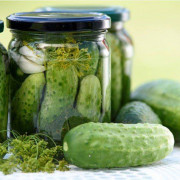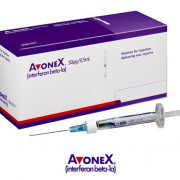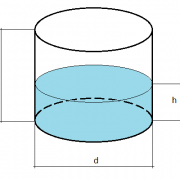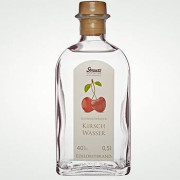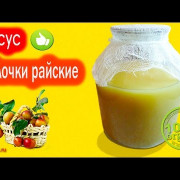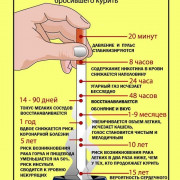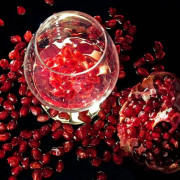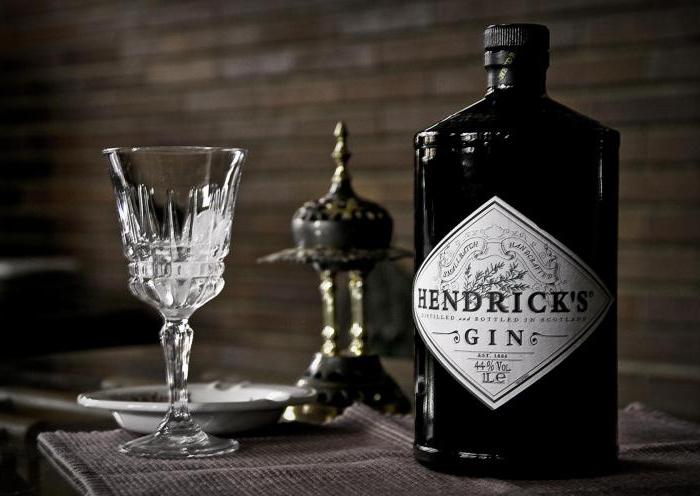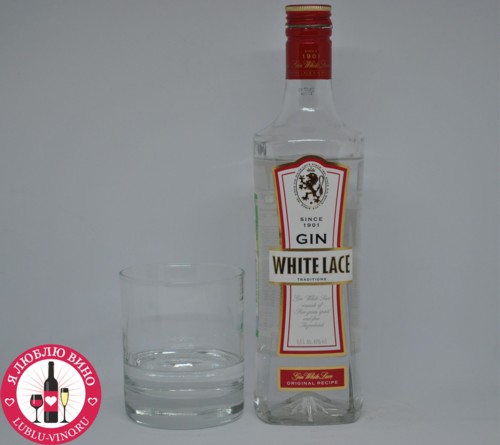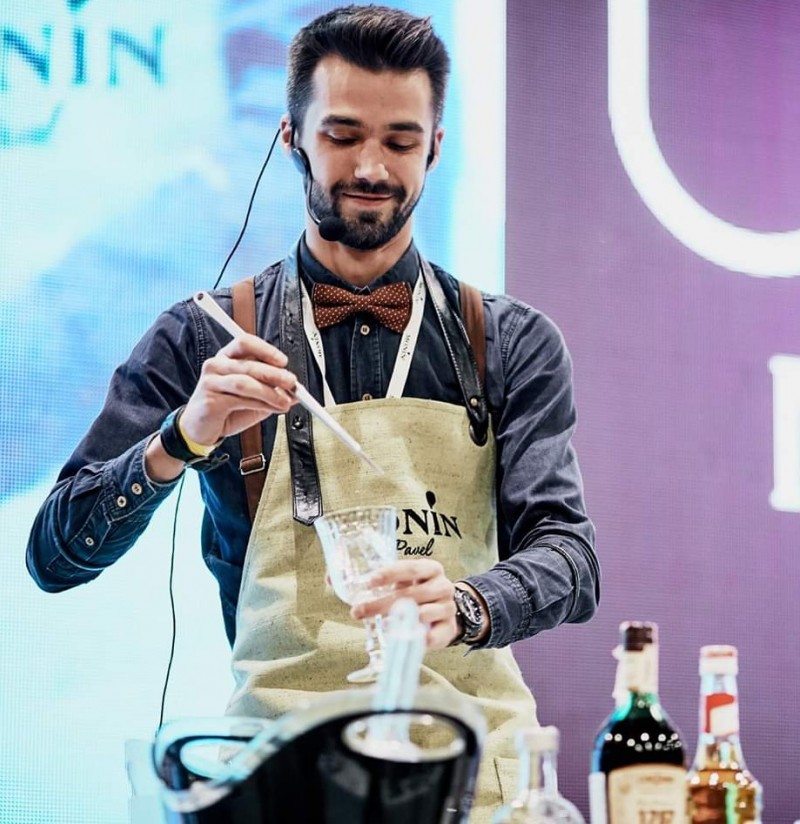Джин tanqueray (танкерей) и его особенности
Содержание:
Джин
Чтобы его продукт отличался от остальных, он сделал оригинальный ход – он стал разливать свой джин в бутылку, сделанную в форме гидранта из которого по легенде и поступала вода для производства первой партии напитка. С тех пор «утекло много воды», но дизайн бутылки остался неизменным.
Кроме того, не так давно стал выпускаться ещё более премиальный Tanqueray Ten, а так же новомодный Rangpur. Так же в их линейке был замечен даже Tanqueray Old Tom, но эти виды уже из области фантастики, и купить их просто не реально.
Мне же досталась вполне обычная увесистая зелёная бутылка размером в целый литр, классической крепости в магазине дютишной торговли как вы понимаете. На вид она оказалась вполне себе приличной и в лучших традициях английских джинов: белая стильная этикетка и приятный джиновый запах.
Куда же можно деть литр хорошего джина? Ответ очевиден – куда ж ещё как не в Мартини!!! Хотя некоторые западные любители джина, в советах по употреблению рекомендуют его использовать «куда угодно, только не в Мартини», я позволю себе с ними не согласиться.
Вообще же я убеждён, что на качественном джине плохой Мартини не сделаешь! Конечно отличия во вкусе будут, но чтобы получить откровенно плохой коктейль – это надо постараться.
Я же взял джин и имеющийся на тот момент вермут (хотя для такого джина можно было бы взять и что получше — хотя бы Чинзано), размешал и конечно «добавил оливочку») — получилось просто отлично!
С другой стороны, именно этот джин не представляет из себя ничего особенного, и вся его фишка похоже лишь в его внешнем виде. При цене почти равной Бомбею (я говорю о международных а не российских ценах), я пожалуй предпочту голубую бутылочку зелёной.
Tanqueray Rangpur
So many people assume that Tanqueray Rangpur is a lime-flavoured gin, such a song and dance did Tanqueray make of the fruit when it first launched. It’s a lime featuring gin, sure, but lime doesn’t lead the sole charge here.
Rangpur is a Bengali word, though the limes are fairly prolific across the world. They’re called Canton lemons in South China, hime lemons in Japan, cravo lemons in Brazil and mandarin-limes in the United States. They’re not like other limes in that they combine various citrus elements to hone their own distinct personality. They’re zesty and acidic, but hugely juicier.
When distilled by the Tanqueray team alongside a blend of other classic gin botanicals, the resulting spirit is crisp and punchy, with a sharp citrus edge. Interestingly enough, when we first reviewed it back in 2014 we described it as “a folly of a concept at the base of the Tanqueray estate,” and while we still don’t exactly love it, it’s definitely nowhere near the biggest weirdo at school nowadays.
Products
Tanqueray London Dry, Rangpur, and No. Ten
Tanqueray London Dry Gin is the original product that was launched in 1830; its key botanicals are juniper, coriander, angelica root and liquorice. It is variously sold as:
- IMPORTED 47.3% ABV (United States, Canada, Germany and European duty-free shops)
- Export Strength 43.1% ABV (United Kingdom, Norway and Sweden)
- 40% ABV (Australia, Canada, and New Zealand)
Tanqueray No. Ten (47.3%) was introduced in 2000 and is targeted at the martini market. It is distilled four times.
Tanqueray Sterling Vodka was introduced in 1989 and is available in both neutral and citrus flavours. Its main market is the United States.
Tanqueray Rangpur Gin was introduced in Maryland, Delaware, and Washington, D.C. in the summer of 2006. It has a strong citrus flavor, the result of rangpur limes, ginger, and bay leaves added during the final distillation process. It is produced at 82.6 proof (41.3% abv) and is now available throughout the United States and Canada.
Tanqueray Malacca Gin was introduced in 1997 as a «wetter» alternative to the London Dry, with more sweetness and a stronger fruit palate (most notably grapefruit). Discontinued in 2001, Diageo announced on 12 December 2012 (12/12/12) that a 16,000-case limited edition of Tanqueray Malacca would be relaunched in the US, Great Britain, Canada and Western Europe for February 2013.
Past offerings from Tanqueray also include both orange and lemon gins, produced from 1937 until 1957, when both were phased out.
Notable spirit ratings for Tanqueray included a string of Double Golds (for its basic London Dry) for 2005–2007 from the San Francisco World Spirits Competition. Later years’ competitions saw Tanqueray win a string of silver medals and then another double gold in 2012. Wine Enthusiast rated the London Dry in its «96–100» category in 2007 but gave it a «90–95» in 2011.
Виды джина Танкерей
По количеству содержания алкоголя классический Tanqueray делится на 3 категории:
- Американский вариант обладает крепостью 47,3 градуса.
- Модификация, преимущественно ориентированная на Европу, содержит 43,1 % алкоголя.
- А в Канаду, Австралию и Новую Зеландию поставляется продукт крепостью 40 оборотов.
Хотя Tanqueray популярен во многих странах мира, особенно он пришелся по вкусу жителям США. Существует даже легенда, согласно которой он стал первым напитком, поданным в Белом доме после отмены сухого закона в 1933 году.
Поэтому не случайно владельцы дистиллерии выпустили несколько дополнительных вариаций напитка, ориентированных именно на заокеанских потребителей.
Tanqueray London Dry Gin, 47,3%
Состав выдающегося джина Tanqueray долгое время держался в секрете, однако сегодня известно, что, помимо можжевеловых ягод, в композицию входят кориандр, корень ангелики и лакрица, которые добавляются в процессе последней перегонки.
Прозрачный джин с ароматом можжевельника и цитрусовых. Вкус мягкий и гармоничный, чувствуются лимонная цедра, хвоя и кориандр. Завершение сухое и насыщенное, с выраженными пряными нотками. Идеальная подача – с тоником, льдом и ломтиком лимона.
Tanqueray № Ten, 47,3%
Он обладает сбалансированным, свежим вкусом и ароматом с нотками грейпфрута, лайма, апельсинов, можжевельника и ромашки и долгим приятным послевкусием. Аромат свежий, яркий, с нотками цитрусовых, можжевельника, трав и специй.
Во вкусе чувствуются лимон, грейпфрут, апельсин и лайм, к которым присоединяются оттенки можжевельника и цветов ромашки. Рекомендован к употреблению с качественным тоником и ломтиком розового грейпфрута.
Коктейли на основе джина
Бронкс Аперитив, Short Drink, 25,8%
- 2/10 сладкого красного вермута
- 2/10 сухого вермута
- 2/10 апельсинового сока
В шейкер, наполовину наполненный льдом, налить ингредиенты, взбить. Отфильтровать в коктейльный бокал. Некоторые бармены при смешивании этого коктейля используют только красный вермут. Добавляя в Bronx белок, получаем Silver Bronx (Силвер бронкс), а желток – Golden Bronx (Голден бронкс).
Джин-физ Long Drink, 14,2%л
Этот коктейль был придуман американцем Генри Рамосом, чьей специальностью был коктейль Ramos Gin Fizz, в который он добавлял белок и бил коктейль в шейкере 5 минут. У Генри Рамоса была целая команда молодых барменов, взбивавших постоянно только Ramos Gin Fizz.
Рецепт
- 2/10 лимонного сока
- 1/10 сахарного сиропа
- 4/10 содовой воды
В шейкер, наполненный льдом наполовину, налить сахарный сироп, лимонный сок и джин. Завернуть шейкер в полотенце, чтобы лед меньше таял, взбивать минимум одну минуту. Отфильтровать в highball со льдом, добавить содовую.
Украсить кусочком лимона и вишней.
Варианты
Сегодня Gin Fizz с белком называется Silver Fizz (Силвер-физ), с желтком – Golden Fizz (Голден-физ), а с целым яйцом – Royale Fizz (Роял-физ).
- Tanqueray London Dry – 40 мл
- розовая вода – 20 мл
- тоник из бузины
Для декора нужно взять лепестки роз, малину и клубнику.
Джон Коллинз Long Drink, 14,2%
Этот коктейль придумал метрдотель Джон Коллинз из лондонской гостиницы «Лиммерз» в начале XIX века. Он готовил John Collins, используя Dry Gin и Tom Collins, используя сладковатый Old Tom Gin. Но из-за того, что Old Tom Gin постепенно перестали производить, этот коктейль называется иногда также Tom Collins.
Рецепт
2/10 лимонного сока
1/10 сахарного сиропа
4/10 содовой воды
Этот коктейль включает в себя те же компоненты, что и Gin Fizz, но готовится другим способом. Прямо в бокале highball со льдом смешать ингредиенты, затем разбавить содовой.
Украсить вишней или кружком лимона. Подавать с соломинкой. В некоторый странах в этот коктейль добавляют немного биттера Angostura. Варианты
Этот коктейль самый известный из коктейлей группы Collins. Существуют и другие разновидности на основе различных спиртных напитков.
Историческая справка
Основатель компании Чарльз Танкерей родился в 1810 году в Лондоне. Его отец и дед были священнослужителями, но будущий винодел решил избрать свой путь и вместе с братом пошел работать на ликероводочный завод Curries, чтобы изучить тонкости изготовления джина. К моменту открытия своего предприятия в 1835 году у предпринимателя была собрана целая книга рецептов крепкого напитка с различными пропорциями ингредиентов.
Оригинальное сочетание спирта классической двойной перегонки с такими традиционными ингредиентами, как корень дягиля, кориандр, лакрица и, конечно же, ягоды можжевельника, дополненное качественной водой из лондонского района Блумсбери, быстро сделало напиток весьма популярным.
К концу XIX века в Лондоне открылось множество предприятий по производству крепких напитков. Чтобы выжить в условиях жесткой конкуренции, сын основателя Чарльз Танкерей заключил соглашение о слиянии с фирмой Гордонов, в результате образовав компанию Tanqueray Gordon & Company. Владельцы приняли решение продвигать марку Gordon’s в Великобритании, а джину Tanqueray было суждено завоевать рынок США.
Рост продаж продолжался даже во время Сухого закона. Прозрачный джин стал одним из ингредиентов коктейлей, созданных в период запрета алкоголя. После отмены ограничений напиток стал еще более популярным. По одной из легенд, джин Tanqueray с тоником пили в Белом доме в 1933 году на празднике в честь окончания действия Сухого закона.
Воздушный налет 1941 года практически полностью разрушил завод. Уцелел только один перегонный куб – Old Tom.
После окончания Второй мировой войны здания отстроили заново, а оборудование отреставрировали и установили вновь. К 2000 году популярность джина несколько упала, и компания выпустила на рынок Tanqueray № Ten на основе свежих цитрусовых фруктов, который вернул интерес к бренду. В 1995 году винокурня переехала в округ Шотландии Файф.
Кстати, последнее обстоятельство отразилось на дизайне бутылки англо-французского джина. Она имеет форму гидранта, некогда использовавшегося для перекачивания той самой вкусной воды в первую дистиллерию Танкереев.
Tanqueray No. TEN
Tanqueray No. TEN Gin, so named for the still on which it is made, is such a core member of the team that we can hardly believe it hasn’t always been on the scene. It has been around for a wee while, though, having launched in 2000, way ahead of this modern iteration of the Gin craze. The gin is made with fresh, whole citrus fruits, which brings great depth and character.
Indisputably a step up in class, the gin seems smoother than Tanqueray’s classic offering. It has a full-bodied grapefruit and citrus hit to it and when released was highly sort after by bartenders who were keen to work with a gin that had a little something extra about it. It was go-to Martini fodder in a world of standardised spirits, and even though many thousands of gins have come along since, it’s still one that cocktails makers and those in the know keep close to hand.
Taste wise, the big brash citrus has plenty of juniper alongside it, along with a lovely floral note. The finish is smooth, laden with citrus oils, and the high strength (47%) makes it stand up to the loudest of mixers.
Although Tanqueray No. TEN has won numerous gins since its launch, it’s unprecedented win as ‘Best White Spirit’ three times in a row led to the San Francisco World Spirits Competition creating a ‘Hall of Fame’ for the gin to sit in. And that was just three years after its launch! Despite the growth of the category, the gin remains one of the most respected on the market, offering a subtle shift away from tradition and a fantastic body to it, that carries exceptionally well in cocktails.
Liquid aside, with an eye catching bottle that allows for good shelf visibility, as well as global PR campaigns making heroes of the world’s best bartenders, the brand will carry on cementing its place as not only the leader and pioneer of the premium gin category, but as one of the most loved.
Виды джина Танкерей
Tanqueray London Dry Gin, 47,3%
Прозрачный джин с ароматом можжевельника и цитрусовых. Вкус мягкий и гармоничный, чувствуются лимонная цедра, хвоя и кориандр. Завершение сухое и насыщенное, с выраженными пряными нотками. Идеальная подача – с тоником, льдом и ломтиком лимона.
Tanqueray № Ten, 47,3%
Джин со свежим ароматом цитрусовых фруктов занял почетное место в зале славы на конкурсе в Сан-Франциско. Во вкусе чувствуются лимон, грейпфрут, апельсин и лайм, к которым присоединяются оттенки можжевельника и цветов ромашки. Рекомендован к употреблению с качественным тоником и ломтиком розового грейпфрута.
Tanqueray Flor de Sevilla
Released in Spring of 2018 (and another one from the archives), Flor de Sevilla is based on a trip Charles Tanqueray took to Spain back in the 1860s. This particular tranche of the estate was launched in the UK and Spain in May, and, with its light orange, post-infusion hue, is a very obvious step to get into the fruity gin explosion that has caused waves across the category.
It may well have been a cynical decision, but the liquid isn’t lacking because of that – quite the opposit in fact – it’s one of the best fruit gins on the market today. It is unclear as to quite what goes into it or how it’s made however, and reading the label is essentially reading something that gives a lot of wiggle room from every angle: “The natural flavours of Seville oranges and orange blossom, other natural flavourings, colours and other fine botanicals” (thus meaning it could be steeped after distillation, or it could be a mix of natural essences, colourants and sweeteners).
The smell is overpowering. It’s got that just peeled, freshly cracked, overripe, juice running down your arm smell. Sometimes oranges have a faint air of pith and mould about them – not here! This is Sunny D, Tropicana levels of orange. It’s the tangerine you find at the bottom of your stocking on Christmas morning and it’s the oranges boiling on the tree in the midst of a Spanish heatwave.
Coriander spice adds a great depth to the gin. Sweetness laps at the tongue, but a heat joins it, keen as mustard to keep that gooey orange taste tethered to earth. Juniper still hums out from beneath it, though it doesn’t really leave its mark until the aftertaste. It’s delicious stuff. Silly at times, and far too orangey (for crows) to be a by-the-book gin, but that won’t stop us from grabbing this and a big old bottle of tonic and making for the garden just the second we get a minute…
History
Tanqueray gin was initially distilled in 1830 by Charles Tanqueray in the Bloomsbury district of London. The retail outlet of Edward & Charles Tanqueray & Co was established on Vine Street, London, in 1838.[citation needed] When Charles died in 1868, his son Charles Waugh Tanqueray inherited the distillery, which continued to operate until it was severely damaged during World War II. The only facility to survive the Axis bombing, now known as «Old Tom», has since been moved to Cameron Bridge, Scotland.
According to one report, Tanqueray became the highest selling gin in the world for the first time in 2016, with nearly three million nine-liter cases sold.
Advertising
Tanqueray introduced «Mr. Jenkins,» a white-haired, well-dressed spokes-character, in print ads in 1994. He was retired a few years later. In 2004 Tanqueray introduced “Tony Sinclair,” a younger, foppish hipster socialite spokes-character in television ads created by Conor Sheridan. Sinclair’s catchphrase at the end of every commercial was “Ready to Tanqueray?” followed by a manic laugh. He was portrayed by Rodney Mason as a madcap socialite of Black British descent.
In the 2008 Mad Men episode «The Jet Set,» Duck Phillips receives a crate of Tanqueray from his British former advertising colleagues as enticement for Duck to initiate their firm’s purchase of Sterling Cooper.
Tanqueray to taste…
The four botanicals thought to be used are juniper, coriander seed, angelica root and liquorice. They all combine to create a smooth gin, well balanced, juniper dominant taste – something every Gin lover would want. There’s a good reason it’s been so popular across the world: it’s a great gin, creamy both at the domestic 43.1% ABV and export strength 47.3% ABV, it’s easily drinkable and makes for a cracking G&T.
The lack of citrus botanical makes it slightly drier than some other gins, but coriander adds both piquancy and lemon on the nose. Add a healthy citrus twist in the glass and the gin seems to be made for those who enjoy a G&T with a backbone! It’s an interesting gin to put head to head with Beefeater, as the two both have a similar heritage, price point and are both distinct as the quintessential London Dry gins – we recommend trying both to see which you prefer (yes, any excuse for having two gins at a time… we know!).
According to company legend, Tanqueray was Frank Sinatra’s favourite gin. We also like the story about the crest on the front of the bottle, even though this may not be true. Depicted on the crest are a pineapple and axes. The pineapple is known as a symbol that represented both hospitality and prosperity -in the 1800’s, having them in your home was sign of wealth and power (as they were both expensive and hard to get hold of given they would rot before landing ashore, unless they were part of the cargo of the fastest and best ships the navy had). The two axes are allegedly a symbol of the family having taken part in the third crusade. Folklore perhaps, but it makes for a nice anecdote!
With pressure mounting for shelf space in a resurgent gin market, Tanqueray have (like many others) had to compete hard to remain the house serve in bars. We’re pleased to say that like Beefeater their efforts are paying off, and campaigns like ‘Tonight We Tanqueray’ (2011 to 2013) seem to have sparked the imagination of many consumers and re-ignited Tanqueray’s stake as the established and the most talked about gin in town.
You can see the video here:
Tanqueray sells over 2 million nine litre cases each year, making it comfortably one of the top five selling gins in the world. Surprisingly, given the huge quantities needed to achieve this – all of the gin is still made at Camron Bridge (granted, it’s one of Europe’s largest distilleries – but still it’s impressive). More importantly, it is still done in a one shot distilling method. Multiple-shot production is when a gin is made as a concentrate – several times stronger than the original – and is diluted with neutral spirit and water to bring the botanical intensity back in line.
With such heritage there is always room to dig into the archives. In 1937, Tanqueray released two relatively short-lived expressions – Tanqueray Orange Gin and Tanqueray Lemon Gin. Both were phased out by the late 1950’s, but there’s always the chance they would re-emerge as limited editions. One that appeared in 2013 was Tanqueray Malacca, a re-interpretation of their 1997 release, which has a notable sweeter profile and a lovely, rich grapefruit twang to accompany a full mouth feel. More on Tanqueray Malacca, Tanqueray Rangpur and Tanqueray No.10 can be found in our separate post HERE.
There’s a reason drinkers have been holding Tanqueray close for over a century; it’s delicious, a spirit for nans and hipsters alike, and it’s quietly cool – not changing its ways for anyone, or any trend, for over 180 years. Don’t shun it for being a big boy, embrace it for being one of the most iconic products to flow from the United Kingdom.
—————————-
For more information about Tanqueray, visit their website: www.tanqueray.com
Say hello on Social Media!
Tanqueray Old Tom Gin
Launched in the summer of 2014, Tanqueray Old Tom is a recreation of the brand’s original recipe. Instead of a verbatim re-creation, it has been made in an interpretive way in order to better achieve the idea of what the original pre-1920’s Old Tom was about. To do so, the team had to reverse engineer some of the advances in distilling technology that have occurred since.
Tanqueray Old Tom is made using the same four botanicals as the flagship gin, although in different proportions and with an increased dosage. After distillation, a little New Make Spirit (think un-aged whisky spirit) was added to add a grainy note and “dirty up” the spirit to reflect what it would have been like originally (the base alcohol at the time would not have been as neutral as it is today).
The Old Tom Gin is also sweetened with beet sugar. Rather strangely, instead of only using their usual demineralised water to cut the gin to bottling strength – the team also used a different water source to, once again, add a modern interpretation of what the authentic flavours and textures would have been like (in essence, allow for controlled impurities to enter the chain to create true to form flavours).
There were only 100,000 bottles made and the label is an exact replica of one of the last labels found in the Diageo Archive. There’s all of the clear Tanqueray DNA to nose, but it’s the earthy sweetness of the liquorice that’s most distinct. The cereal like quality of the “dirtied spirit” is apparent too, but there’s nothing filthy about it – here it’s biscuity and sweet. To taste, juniper and coriander seed flourish on the mouth as they always do with Tanqueray Gins, along with a lingering sweet grainy finish. Delicious and thought provoking in equal measure – a treat to seek out if ever you get a chance!
Tanqueray Malacca
Best described as a sweetened version of the flagship Tanqueray, Malacca has smooth notes of liquorice and grapefruit alongside a bold and piny juniper. Based on an old Charles Tanqueray recipe from the 1830s, the gin – when reborn in 1990 – was considered to be a great alternative to the Old Toms of yore. At the time, Gin wasn’t anywhere near the monstrous industry that it is today, so if bartenders wanted to mix up a cocktail that called for something a little sweeter, like a Martinez, they were often left wanting.
The juniper is more subdued in Malacca than in Tanqueray Dry Gin, paving the way for a beautiful balance of spice, sweet and a touch of grapefruit. The untrained nose and palate would certainly name an Old Tom, and when categorising it, it’s very close – but this was never labelled as such and Tanqueray released an Old Tom separately, distilled as per their archived recipe and brought that genre back in its own right.
The Malacca eventually ran aground, though it did pop back in 2013 for a brief stint to both love and fury (love in that it was now available once more – fury as old collectors saw the original bottles’s value drop considerably). It’s currently very, very hard to get hold of on these shores, but in what is proving to be a very big 2018 for team Tanqueray, it’s starting to re-emerge in Australia, Canada and the US. Better get that holiday booked, eh?

